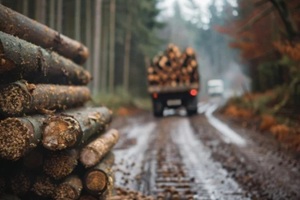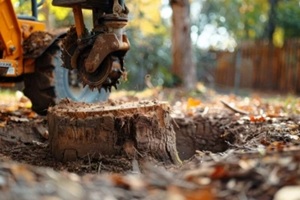
When evaluating the risks most common in the logging industry, most businesses consider the people element: injuries and even deaths from logging and using related machinery. However, the machinery itself can also pose numerous issues, especially given the rugged environments in which it is active. Insurance for logging equipment is non-negotiable for businesses that want to preserve their bottom line when Mother Nature has other ideas.
Logging equipment may become damaged due to regular use or misuse, but it can also succumb to harm from environmental challenges. Specialized insurance is required to protect this equipment from the harsh climates and terrains common in the logging business. Ideally, multiple policies are used simultaneously to provide the best mixture of coverage, no matter the circumstances.
Here are some tips for logging equipment exposed to environmental damage.
Comprehending Environmental Risks to Logging Equipment
Logging equipment is tasked with processing large amounts of timber, but there are other strains it undergoes. The four primary environmental risks equipment faces are weather, terrain, moisture, and natural disasters. In moderation, logging equipment can survive any of these challenges unscathed.
However, prolonged exposure can result in costly damage that may cause significant financial strain to logging companies that do not have adequate insurance coverage. Natural disasters and weather events are unpredictable, so it is essential to carry insurance at all times. Waiting until news of upcoming issues arises is too late to act.
The Financial Impact of Environmental Damage
Environmental damage can cause various malfunctions and breakdowns with logging equipment. Whether damp weather interferes with a machine’s electrical capabilities or a lightning strike destroys a piece of equipment, insurance can help. Repair and replacement expenses are typically covered under an insurance policy.
However, owners should always read the details to understand whether they will be compensated for the machine’s replacement value at the time of replacement or its current appraised cost. Many policies also cover operational downtime and related losses while the equipment is being repaired.
Important Logging Insurance Coverage Options for Logging Equipment
Logging equipment is susceptible to many types of damage. Still, there is no need for a single insurance policy for each type of harm. Instead, consider bundling the three most essential protections with the same insurer:
- Property insurance – Property insurance is helpful for companies who own their equipment rather than rent it. This type of coverage offers security for a company’s property, whether stored at its warehouse or used in processing the land tract. Most policies address common risks such as storms, vandalism, theft, explosions, and natural disasters such as severe storms or forest fires. Depending on the type of work your logging company does, packaging property insurance with auto insurance can offer additional protection for your most important machinery.
- Equipment breakdown insurance – Equipment left out in the environment can suffer damage due to the climate and weather. A lightning strike could short-circuit your machinery’s computerized mechanisms or prolonged exposure to moisture and low temperatures could cause premature breakdown of sensitive equipment parts such as o-rings. Equipment breakdown insurance compensates logging companies for the cost of repairing or replacing equipment or parts as a result of environmental damage. This may include damage caused by trees, whether during loading or if they fall on their own.
- Flood insurance – Depending on the geographic location of the logging company, flood insurance could be a valuable addition to any insurance mixture. Lowland tracts may be prone to flooding even if the weather is fair as runoff from higher areas reaches these depressed elevations. Logging equipment may become trapped in mud and broken in an attempt to get it out, or floods could harm sensitive equipment. In severe cases, a flood may topple equipment and cause breakage or bending, making the machinery unusable. Flood insurance is a smart choice for logging companies if their land tract is located in an area prone to excess water; otherwise, many insurance policies will not include provisions for flood damage.
Other Considerations
Choosing logging insurance requires thinking outside the box. In addition to reviewing the policies outlined above, do not forget to:

- Customize insurance policies – Some types of coverage address damage caused only by specific environmental conditions. For instance, equipment damaged by hail may be covered, while a wildfire might be excluded.
- Take preventive measures – Protecting your company doesn’t just include insurance. Train employees, use equipment according to manufacturer instructions, and be smart about working in hazardous conditions to reduce the risk that equipment is damaged or lost.
- Choose a good insurer – Insurance coverage means little if the insurance agency is unresponsive to claims or makes the process difficult and delayed. Work with an insurance agency that is experienced in the logging industry and has fast response times.
Protect Your Logging Equipment With Burton & Company
Your logging equipment represents a substantial investment in your business, and damage to it that necessitates repair or replacement can present a significant financial burden without the benefit of insurance. The professionals at Burton & Company are forestry industry specialists who can provide personalized insurance coverage for your specific risks and needs.
Without proper coverage, your business could be one accident or natural disaster away from insolvency. Contact Burton & Company for specialized insurance solutions that safeguard logging equipment from environmental damage.

